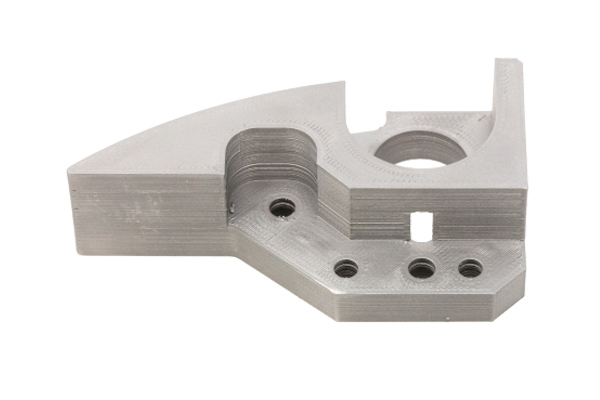BMD ™ technology

BMD ™ technology
The BMD ™ technology
The patented BMD ™ - 3D printing technology (Bound Metal Deposition) developed by Desktop Metal since, 2015.
It is an additive process technology with which complex metal components and assemblies can be manufactured quickly and easily. Depending on the requirements, high-quality metal alloys made of steel, stainless steel, copper and Kovar are available. 31 other alloys made of aluminum, carbide, magnetite, titanium and superalloys with a wide variety of thermal and mechanical properties are currently being developed.
Due to the clean process, BMD ™ systems are also ideally suited for use in an office environment.
The BMD ™ process
At the beginning of the printing process, the 3D data is prepared with the software belonging to the DM Studio Metal 3D printer . The object to be created is positioned in the installation space in the optimal position for the construction process and is broken down into mathematically calculated layers by the software (slicing). The software then automatically generates the allowances for shrinkage, tool paths and traverse paths.
Support structures required for creating overhangs and complex geometries are also calculated automatically, if necessary. The prepared, cut data is then transferred to the DM Studio metal 3D printer with all the necessary parameters.
In BMD ™ -based 3D printing, MIM-bonded metal rods are melted, extruded through a fine nozzle with a machine head that can be moved in X and Y, and then deposited in layers on a construction platform as a semi-liquid metal strand. The layer thickness here is 0.050 mm. This is how the so-called green compacts are created layer by layer.
The subsequent processes
After the printing process has been completed, the green compacts can be finely sanded, if necessary, before they are transferred to the software- controlled DM Studio debinder in the next step , where a large part of the processed organic binders are removed by solvent extraction. The component geometry and the chemical purity of the material are not influenced by this and thanks to its low-emission construction no external ventilation is necessary.
After the binding agent has been removed, the so-called brown bodies are now ready for the last step - sintering. During the sintering process, remaining powder particles are converted into a solid bond via a heat treatment process. The brown pieces are exposed to temperatures close to the melting temperature of the respective material in the software-controlled DM Studio sintering furnace . This further increases the strength and density of the components and the component shrinks to its desired target size.
The support structures built up during the 3D printing do not form a permanent connection with the actual component and can simply be broken out by hand after sintering.